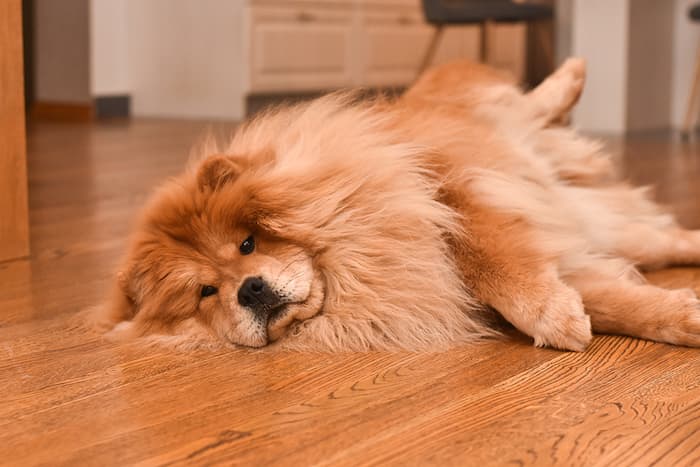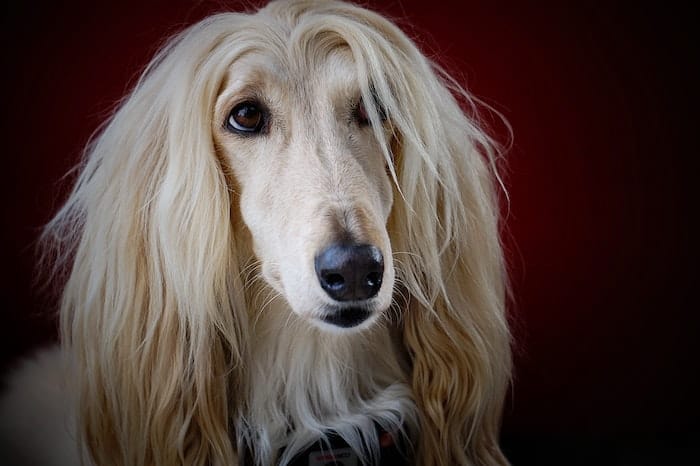Some people may confuse air purifiers with vacuum cleaners. However, the latter only vacuums the floor and does not filter the air effectively. The air purifiers, however, specialize precisely in the small and floating hairs that make it so difficult for allergy sufferers.
It’s relatively easy to answer the question of ‘Which air purifier do I need’ because animal hair is very large compared to other particles. Legit HEPA air purifiers have no difficulty whatsoever with such sizes and filter out animal hair easily and fast. This is because air purifiers are designed to filter even smaller particles from the air. So animal or human hair is the easier “evil” for them.
An efficient, high-quality HEPA air purifier can even filter viruses, bacteria and mold spores from the air. The smallest particles they can remove measure 0.3 micron – for comparison, dog hair thickness measure 30 – 80 micron.
It is important to mention that the room size is crucial in the question of the right dog hair air purifier. This is because the devices have different specifications as to what square footage they are required to clean.
What makes a good air purifier?
An air purifier should, of course, in addition to assuring pure fresh air, remain quiet and unobtrusive. Of course, this is most true at night, when you simply want to sleep in peace and relax. Best air purifiers for dog hair produce only 18 – 27 dB at the lowest speed. This means that the devices operate in a whisper or even breathing noise and are comfortable for humans.
For comparison, a small amount of street traffic that takes place behind closed windows with double glazing would go up to 30dB. Light rain or a refrigerator from a meter distance measures even up to 40 dB, which for some already becomes more or less disturbing.
Before getting the right air purifier you should also ask yourself several questions:
- Do I live in an area with particularly high nitrogen (NO2) pollution?
- Do I live in an area with very high particulate matter and particle pollution?
- Do I suffer from other allergies such as pollen or mite allergies?
- Do I often suffer from dry air, which is especially noticeable in winter when the heating is on?
- Do I have a fireplace at home and should protect the air from pollution?
- Do I live near a farm or other industry?
- Does my doctor recommend air treatment more often?
- How large are the rooms or the space where the air purifier is to be placed?
How is the dog hair filtered from the air?
Modern high-quality HEPA air purifiers use at least a 3-stage air filtration process to remove dog hair from the air:
Pre-filter: for animal hair and coarse particles
The pre-filter is particularly important for catching dog hair at the first stage. Coarse dust particles and lint also don’t stand a chance. Sometimes it is washable and it also serves to extend the life of the HEPA filter underneath.
HEPA filter filters the finest particles
The HEPA filter is the heart of the air purifier. It is extremely finely meshed and removes 99.97% of all fine and ultra-fine particles from the room air. Allergens such as dust mites, pollen and pollen do not stand a chance. An antimicrobial feature lets you breathe hygienically clean air.
Activated carbon filter filters vapors and odors
For air that smells fresh, like freshly washed air, activated carbon filters are essential. Gases and molecules are also much smaller than particles. They penetrate conventional air filters, which is why the absorptive function of activated carbon provides a remedy here and neutralizes odors in seconds. Even unknown culprits such as chemical gases, which are used in the industrial production of furniture, for example, can no longer harm you with the air filter.
The filtering performance of the activated carbon filter depends on the concentration of activated carbon in the filter – therefore, to achieve the best results, also pay attention to the percentage of activated carbon used. This is especially essential for people who live near a freeway or highway, or who regularly come into contact with toxic fumes such as paint fumes, or who smoke at home.
CADR, filter maintenance and other tips
The purified air now needs to be distributed efficiently throughout your room so that it reaches you again. The measurement that calculates how efficiently this is done is called “CADR” (Clean Air Delivery Rate).
How often should I clean the air purifier and change the filter?
Air purifiers are easy to clean. Most of the time you simply remove the old filter and install a new one. You should change the filters between 3 to 12 months depending on the pollution level.
There are phases when your pets shed their fur hair particularly heavily. For most dogs, these phases are in the spring and fall. The same is true for cats, with some pet owners even seeing a heavier occurrence between April to October. During this time, you should keep an eye on the filter’s contamination level and then change them more frequently if necessary.
Summary
Most air purifiers can do much more than just filter out dog and human hair from the air. The inexpensive entry-level models cover smaller spaces and their price tag doesn’t exceed $150 whereas some premium air cleaners may cost you up to $600-800 with some even exceeding $1,000.
HEPA air purifiers are safe for humans and dogs alike, so you can put them in your bedroom, nursery, or living room. Place the devices there so that you, as an allergy sufferer, can soon feel how your symptoms are reduced and you can achieve more joy in life.
Related Reading


